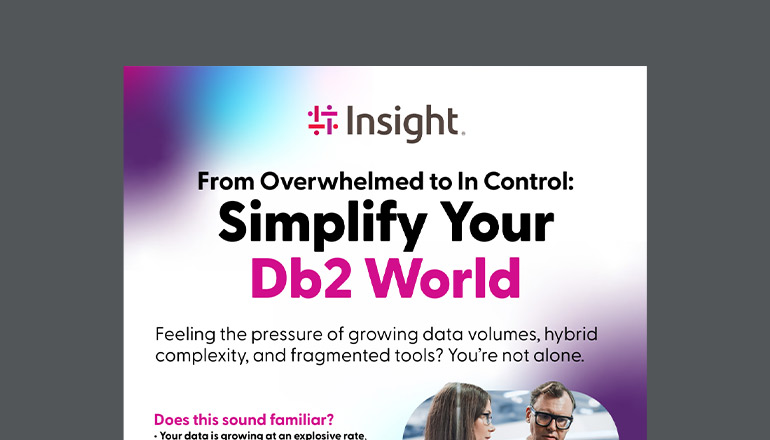Article Take Control of Your Data With This Data Management Process
In an annual survey conducted by Foundry and commissioned by Insight, 72% of respondents said their data volume is growing faster than they can manage it.
By Ken Seier / 13 Apr 2023 / Topics: Artificial Intelligence (AI) Analytics

While all businesses generate data, many are leaving valuable business insights on the table with a lack of proper data management and governance. The following guide can give organizations the tools they need to ensure their data is high quality, curated and fit for purpose.
Step 1: Data collection
While your business may already have data at its disposal, it’s important to take a step back and evaluate the collection of it. Depending on the data you want to source, collection methods may vary; to ensure data quality and utility, data linking can be deployed to create a unified view of customer or product data from multiple sources, while avoiding unnecessary duplication or incomplete data. Additionally, if the data is going to be used for Artificial Intelligence/Machine Learning (AI/ML) in the future, then having a statistically significant volume is crucial and should be planned for.
Step 2: Data Classification
Classifying data is all about understanding what you have and the most appropriate ways to use it for business. While customer data can be useful for developing AI that can predict preferences or buying patterns, not all pieces of customer data will be necessary for that goal. When it comes to AI/ML, using the most relevant data is going to help ensure stronger AI and better business insights in the end. Additionally, classification streamlines your data security approach, ensuring that the most private data is given the rigorous treatment it needs. Lastly, classifying data allows businesses to prioritize certain collection methods, ensure its quality and determine proper storage.
Step 3: Data storage
With data properly classified, organizations can approach data storage with a holistic understanding of their needs. Some types of data may require easier access, while others might require that additional security or backup measures are in place. For example, data that will be used for quick decision-making (like with intelligent edge technology) is going to find a better fit in local storage rather than in the cloud. Additionally, determining the proper storage method helps keep expenses in check by eliminating situations where data might be stored in a more costly location than necessary.
Step 4: Data governance and management
Data curation ultimately comes down to the management and governance of data and is crucial for being able to meaningfully use business data. However, inadequate data governance is currently considered the number one barrier to achieving business value from data. Organizations should focus their data management by segment, which is why each previous step is necessary before tackling this one effectively. Data management and governance should include the following:
- Regulation: Some data that businesses may want to use have regulations set by GDPR or other protections that must be followed when managing that data. Complying might limit how that data can be used and/or the privacy and protection of that data.
- Internal governance: Within an organization, parameters may be set for which data is used for AI/ML or other purposes. These policies can help ensure a certain standard for how data is used and protect the fidelity of data insights.
- Security: Part of security is maintaining the durability and resiliency of data. Security protects data durability by safeguarding it from compromise or corruption, while resiliency is achieved by ensuring data is still accessible despite unexpected disruptions.
- Retirement: To establish that the data being used is relevant, as well as to manage storage costs, it is a good idea to have policies around data expiration and retirement.
These data management measures are poised to ensure that your data is not only organized and accessible but is also ready to be activated for meaningful use.




